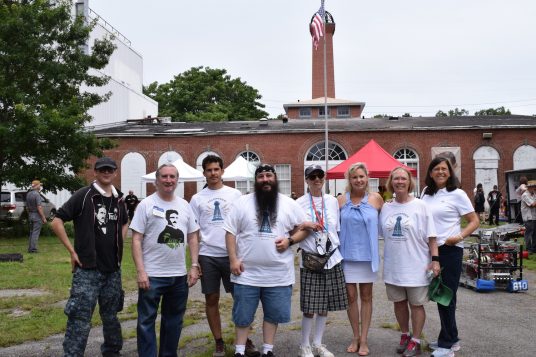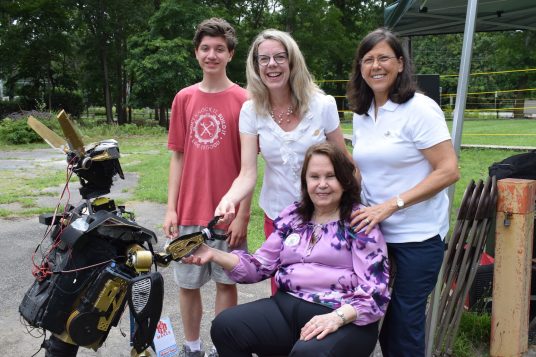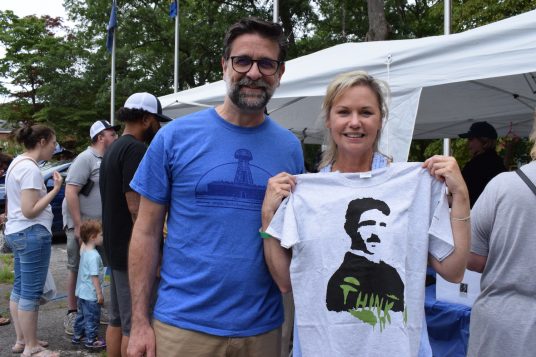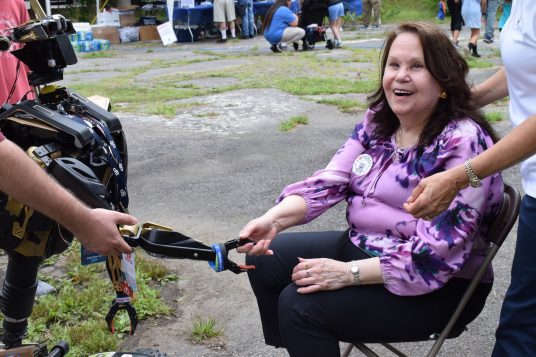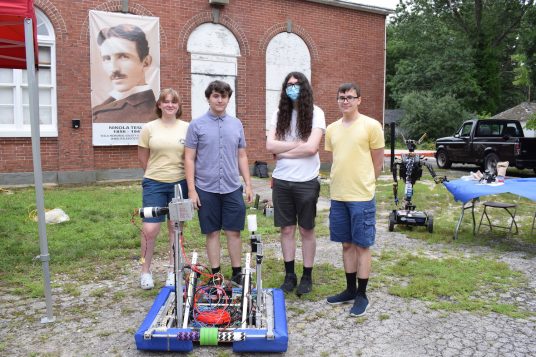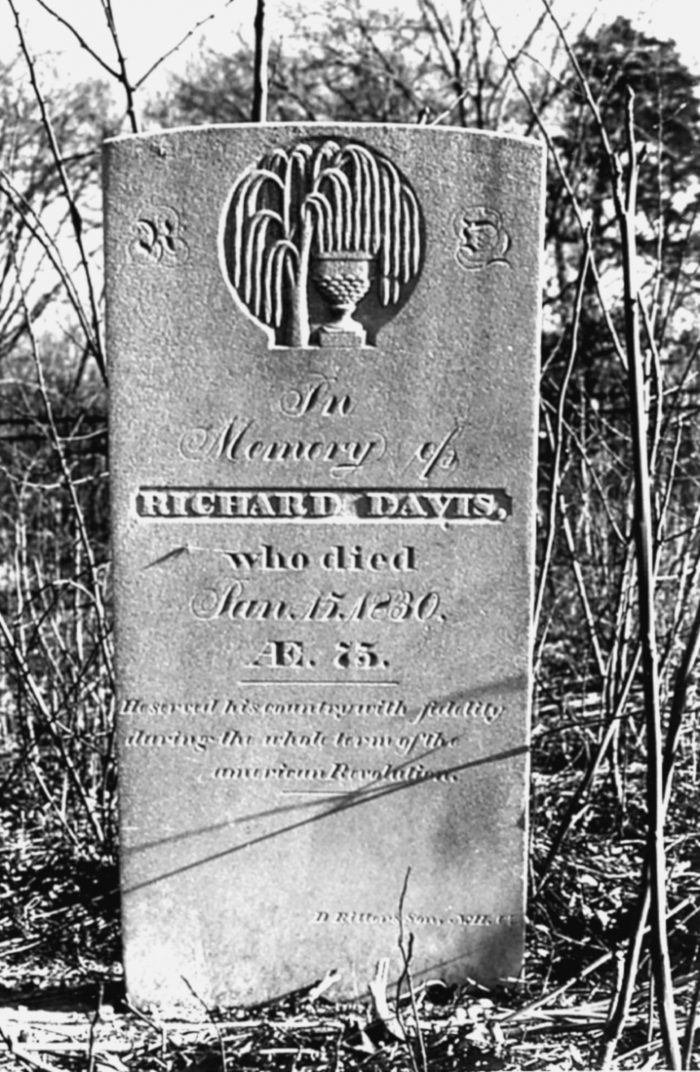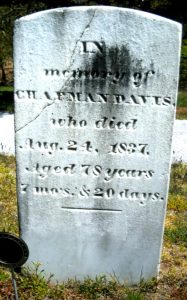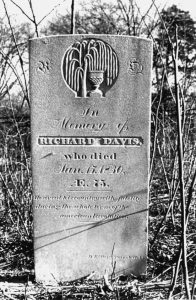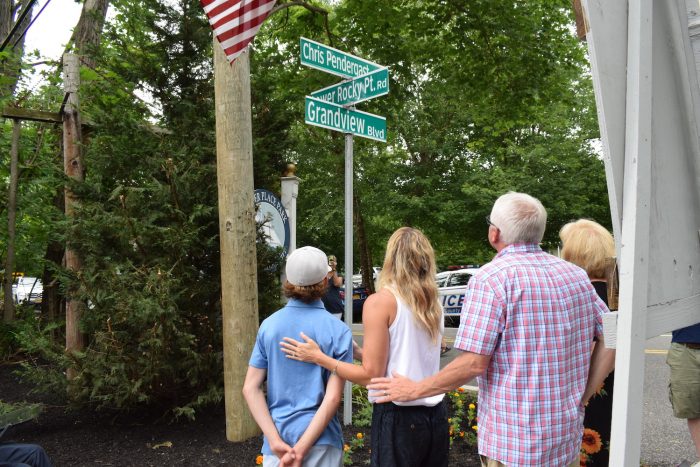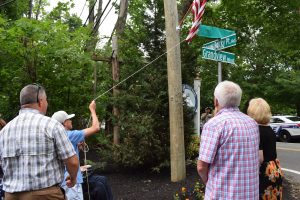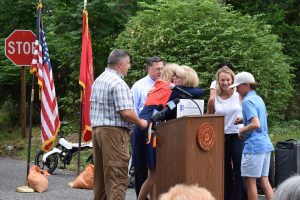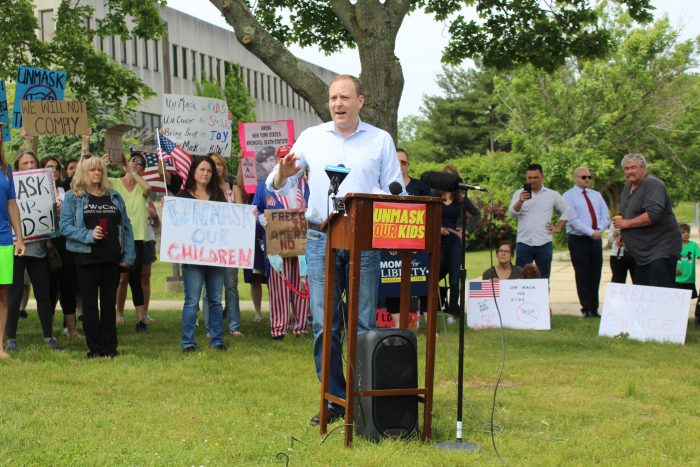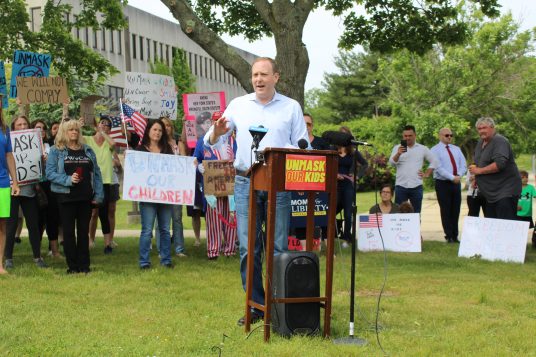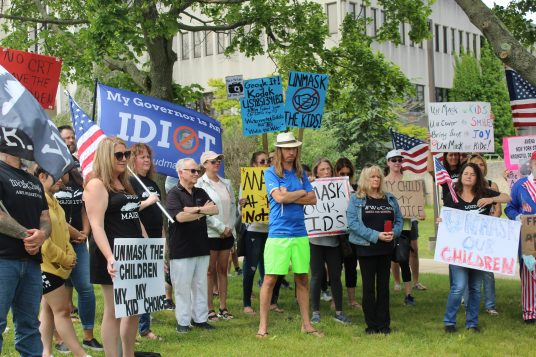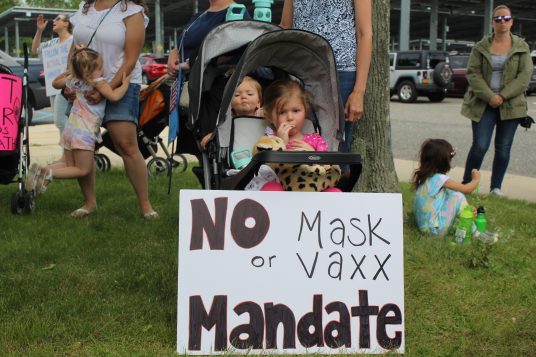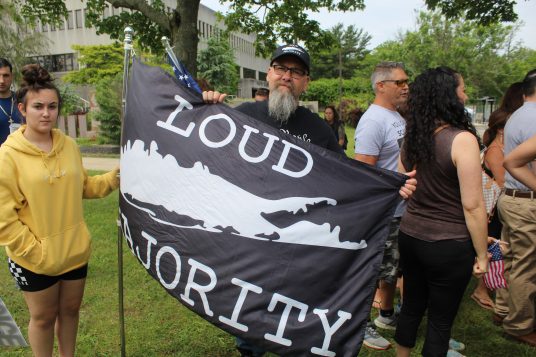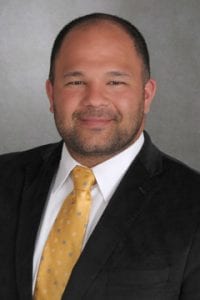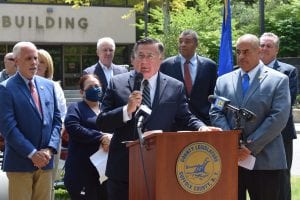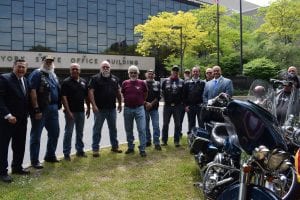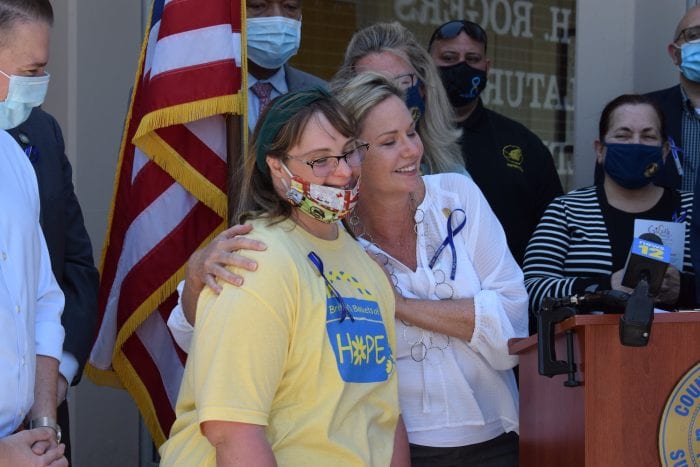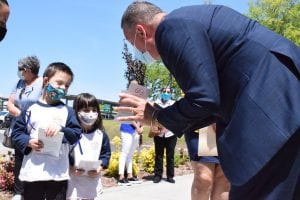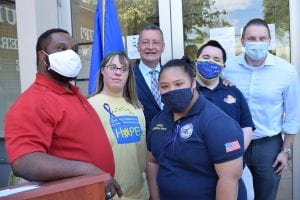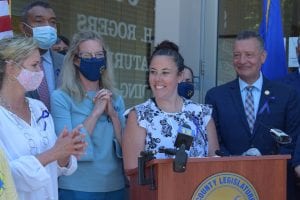Famed scientist, inventor and entrepreneur Nikola Tesla would have been 165 this year, and the best way to celebrate his life and legacy was to party at his old lab in Shoreham.
On Saturday, July 10, hundreds of people gathered at the Tesla Science Center at Wardenclyffe for the Tesla Birthday Expo and Birthday Night Show.
The events featured a number of educational exhibits including many of the local STEAM — science, technology, engineering, arts and math — exhibits, robotic clubs, Tesla coils, Tesla car showcase, amateur radio, battlebots, Maker Space trailer, local artisans and an interactive STEAM bus from New York Institute of Technology. The daytime event was coupled with a lively nighttime celebration featuring the band ArcAttack.
“What an amazing day to celebrate one of this world’s most acclaimed scientist and inventor,” said county Legislator Sarah Anker (D-Mount Sinai). “Thanks to the many TSCW volunteers, local and international community support, and the many partnerships with government, Nikola Tesla’s legacy will continue to inspire and encourage our future scientists.”
The Tesla Science Center at Wardenclyffe, located in Shoreham, is Nikola Tesla’s last remaining laboratory. Known as a man before his time, he was deemed a genius while researching alternating current systems. He believed that energy didn’t have to be a rich man’s luxury. Energy could be available to all and powered naturally. He thought he could power the whole Northeastern seaboard from Niagara Falls.
An inventor with hundreds of patents, he was involved in the invention of the radio, remote control and more.
In 1901 Tesla acquired the Wardenclyffe property in Shoreham to test his theories of being able to wirelessly transmit electrical messages, funded by J.P. Morgan. A huge 187-foot tower was designed and constructed for the purpose.
In 1903 creditors confiscated his heavier equipment, and in 1917 the tower was demolished. The concrete feet used to hold the structure can still be seen on the property today.
Tesla was eventually cut off, causing him to lose control of the site. The property became a film processing company in the early ’30s, where harsh chemicals were dumped into the ground. The contaminated property was sold again and became shuttered in 1987.
A decades-long cleanup ensued, and the property was put back up for sale.
The community — locally, nationally and even internationally — came together to fundraise to eventually buy the property in 2013, preserve it and make it a real historic site.
According to Doug Borge, chief operating officer at TSCW, “At our annual Tesla Birthday events, we not only celebrate Nikola Tesla’s contributions, but also his living legacy that we each build upon through science and innovation.”
The mission of Tesla’s last remaining lab is to develop the site into a transformative global science center that embraces his bold spirit of invention, provides innovative learning experiences, fosters the advancement of new technologies and preserves his legacy in the Tesla Museum.
The group imagines a world where people appreciate Tesla’s contributions, are inspired by his scientific audacity and engage in the future betterment of humanity.
“Today is a perfect example of where we are as an organization,” Borge said. “We’re a community hub for people that love science technology, that are associated with Nikola Tesla and to be a resource for people to leverage, learn and become their own version of Tesla.”
In general, technology and interactivity at this year’s Tesla Birthday Expo were more engaging and popular than ever, he added. New and expanded STEAM exhibits allowed attendees to get hands-on with Tesla inventions and technology.
ArcAttack made their first visit to Wardenclyffe and took things to a whole new level with a performance at the night shows featuring Tesla coils, rock music and lightning-producing electric instruments. Volunteers in the audience were “zapped” in a Faraday cage, including TSCW’s executive director Marc Alessi.
“We weren’t sure what to expect in terms of attendance at this year’s Tesla Birthday events, due to the pandemic,” Borge said. “Fortunately, we had a great turnout at both the daytime Tesla Birthday Expo and night show.”
Borge added that “the expo is interesting because you can see the crowds clustering around specific exhibits and interacting with enthusiasm.”
Some fan favorites were the 3D scan that showed the interior of Tesla’s laboratory as it looks today, the robotics and maker space area, along with the go-carts and robots zipping around.
“This is such an exciting event for the community to learn about important advances in technology,” said attorney and advocate Laura Ahearn, of Port Jefferson. “I’m really excited about getting to meet community members that come here, and some of the high school students that have built from scratch robotic devices better than anything … when I was in high school, I wish I would have had the opportunities that these young students have because it’s going to help them in their future.”
Borge said within the next few weeks, demolition of the dilapidated, noncontributing factory building suffocating Tesla’s laboratory will begin. Additionally, they plan to break ground on its visitor center that will allow them to pilot exhibits and engage and educate more visitors at Wardenclyffe.
“These are important next steps in the development of TSCW and a moment that many of our global supporters have been looking forward to since TSCW’s record-breaking crowdfund in 2012, which raised $1.4 million in six weeks from 33,000 donors in 108 countries,” he said. “These funds, along with a matching grant from New York State and contributions from supporters like the Musk Foundation, enabled us to purchase Wardenclyffe in 2013. Fast forward to 2021, and TSCW is now positioned to start renovations after raising $10.2 million and acquiring the necessary plans and permits. It’s important to note that we still need to raise another $9.8 million to finish developing the site.”
County Legislator Kara Hahn (D-Setauket) also made an appearance.
“It’s just really exciting to encourage interest in science and to recognize the history here on Long Island,” she said. “It has such an important impact in so many ways.”
The center will be hosting more events this summer, including the Sound of Science concert on Aug. 28 in collaboration with another nonprofit, Rites of Spring Festival, that will offer a unique immersive musical experience by electronic musicians and contemporary composers.
Sept. 23 is TSCW’s Third Annual Gala fundraiser for an evening of virtual entertainment, auctions and tech surprises.
Later in the year, Wardenclyffe will host a Halloween event on Oct. 30, and their annual holiday lighting on Dec. 3.






